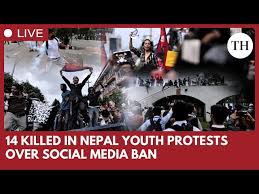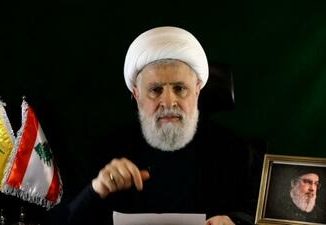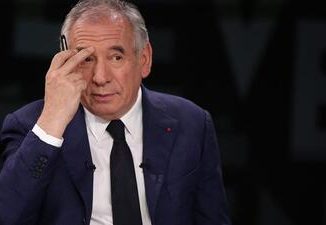
Published September 11, 2025
Former Nepalese Prime Minister Sher Bahadur Deuba and his wife Arzu Rana Deuba were violently attacked during the ongoing protests in Kathmandu. The protests, primarily led by Gen Z citizens, erupted in response to the government’s decision to ban 26 social media platforms, including Facebook, WhatsApp, and Instagram. While the ban was lifted, the demonstrations continued due to broader frustrations over government corruption and authoritarianism.
On September 9, 2025, a mob stormed the Deubas’ residence, dragging them from their home and subjecting them to severe beatings. Videos from the scene show Sher Bahadur Deuba, visibly bloodied and fearful, being pulled through a building and later escorted by soldiers to safety. The mob also set their house on fire. Arzu Rana Deuba was reportedly beaten alongside her husband.
The violence is part of a broader wave of unrest that has seen former Prime Minister Jhalanath Khanal’s wife, Rajyalaxmi Chitrakar, killed in a fire set by protesters at their home. Additionally, the Finance Minister was publicly humiliated and forced into a river by demonstrators. The protests have resulted in at least 19 deaths and over 500 injuries, leading to the resignation of Prime Minister KP Sharma Oli and the imposition of a nationwide curfew.
👥 Public/Political Reactions
🇳🇵 Public Response: A Youth-Led Movement
The protests were predominantly led by Generation Z, who mobilized against systemic corruption, the government’s social media ban, and the perceived privilege of political elites. Despite the lifting of the social media ban, the movement intensified, culminating in the resignation of the Prime Minister. Protesters breached and set fire to significant government buildings, including Singha Durbar and the President’s residence. The death toll from the unrest reached at least 30, with over 1,000 injured. Following the resignation, some protesters celebrated the outcome, while others continued to demand broader systemic changes.
🏛️ Political Reactions: Calls for Accountability
In the wake of the protests, several political figures have resigned, taking responsibility for the violence. Home Minister Ramesh Lekhak stepped down after 20 student protesters were killed and over 300 injured due to police actions. Additionally, discussions are ongoing regarding the appointment of an interim leader, with former Chief Justice Sushila Karki being considered. However, some protesters have expressed reservations, advocating for greater representation from Generation Z in the interim leadership.
Demonstrators celebrate during a protestCredit: Reuters
Water cannons, batons and rubber bullets were used by cops during the unrestCredit: Reuters
At least 19 people have died in the deadly clashesCredit: EPA
⚠️ Resulting Effects
🔥 Social and Public Effects
-
Loss of Life and Injuries: At least 31 people died and over 1,000 were injured during the protests, primarily youth-led demonstrations against corruption and the social media ban.
-
Displacement and Fear: Citizens in Kathmandu and other major cities experienced fear and uncertainty as mobs attacked political figures’ residences and public institutions.
-
Youth Empowerment: Gen Z has emerged as a powerful political force, mobilizing nationwide through social media to demand accountability and reforms.
🏛️ Political and Governance Effects
-
Prime Minister Resignation: KP Sharma Oli resigned on September 9, 2025, after the protests escalated.
-
Ministerial Resignations: Home Minister Ramesh Lekhak stepped down, taking responsibility for deaths caused by police actions.
-
Interim Leadership: Discussions began for appointing an interim leader, potentially former Chief Justice Sushila Karki, but protests demand greater youth representation.
-
Institutional Damage: Key government buildings, including Singha Durbar and the Parliament, were set on fire, impacting administrative functions.
🪖 Military and Security Effects
-
Deployment of Army: The Nepali Army was deployed nationwide to restore order, enforce curfews, and secure public institutions.
-
Curfew and Restricted Movement: A nationwide curfew disrupted normal life, commerce, and transportation.
-
Human Rights Concerns: Reports of excessive force by security personnel raised concerns among human rights organizations.
💰 Economic Effects
-
Business Disruption: Daily business operations were severely affected due to curfews, street violence, and damaged infrastructure.
-
Tourism Impact: Tribhuvan International Airport temporarily closed due to unrest, affecting travel and tourism.
-
Property Damage: Residences of political figures and high-profile individuals were looted or burned, causing significant financial losses.
🔮 Long-Term Implications
-
Political Reform Pressure: The youth-led protests have amplified calls for systemic reforms and anti-corruption measures.
-
Potential Political Instability: The country may face prolonged uncertainty as interim leadership and negotiations continue.
-
Rise of Youth Activism: Gen Z’s mobilization could permanently shift the political landscape toward greater civic engagement and accountability.
Fire and smoke rise from the Singha Durbar palaceCredit: EPA
A demonstrator writes on the parliament buildingCredit: Reuters
Documents are thrown as demonstrators gather at the Singha Durbar office complexCredit: Reuters
🔮 Future Outlook
🔮 Political Outlook
-
Interim Leadership: Discussions are ongoing to appoint an interim leader, with former Chief Justice Sushila Karki being considered. However, protesters demand that Generation Z and youth representatives have a voice in governance decisions.
-
Potential Reforms: Pressure from youth-led movements may force the government to implement anti-corruption measures, increase transparency, and reconsider laws affecting civil liberties.
-
Fragile Stability: With key institutions damaged and public trust low, political stability remains fragile. Future governments may face heightened scrutiny and citizen activism.
🪖 Security Outlook
-
Military Role: The Nepali Army will likely continue to enforce curfews and maintain order in the short term.
-
Risk of Escalation: Any perceived authoritarian measures could trigger renewed protests, especially from digitally connected youth.
💰 Economic Outlook
-
Short-Term Disruption: Businesses, tourism, and trade have already been affected. Economic recovery may be slow until political stability returns.
-
Investment Uncertainty: Domestic and foreign investors may delay projects due to instability and potential civil unrest.
🌐 Social Outlook
-
Youth Activism: Gen Z’s involvement signals a new era of civic engagement, likely influencing politics and governance long-term.
-
Public Awareness: Social media campaigns and mobilization may continue to shape public discourse and demand accountability from political leaders.
🧩 Bottom Line:
Nepal stands at a critical crossroads, where decades of political inertia and systemic corruption collided with a digitally empowered youth demanding accountability and reform. The resignation of Prime Minister KP Sharma Oli, coupled with ministerial resignations and widespread public unrest, marks a historic moment in the nation’s political evolution.
The protests, largely led by Generation Z, highlight the power of social media, civic engagement, and collective action in shaping governance. While the immediate effects—loss of life, property damage, and economic disruption—have been severe, the long-term implications point to a potential reformation of Nepal’s political landscape.
As the country navigates interim leadership, military oversight, and ongoing calls for transparency and accountability, the coming months will be pivotal in determining whether Nepal can transition toward stability, inclusivity, and a more responsive government. One thing is clear: the voice of the youth can no longer be ignored, and the future of Nepal will be shaped as much by its emerging generation as by its established political elite.
SOURCES: THE UK SUN – HOUSE OF PAIN Horror moment Nepal’s ex-PM dragged from his house & beaten by ‘Gen Z’ mob as revolution swells over social media ban











Be the first to comment